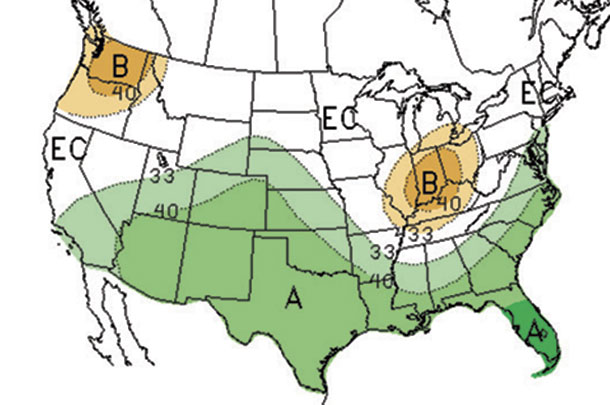After meeting your standards for these traits, bulls should then be compared based on individual performance data (e.g., weaning weight, yearling weight, percent intramuscular fat, etc.), expected progeny differences (EPDs), visual appearance, genetic defects and any other criteria important to your operation. In one bull sale catalog this past year, I counted over 60 pieces of data for each bull. With all the information out there, it can easily get overwhelming when comparing bulls, so it is important to pick the three to five traits most important for your operation and focus on them.

Indexes are often talked about during bull sales. They may be represented in terms of dollars or just numerical values for ranking. Before using indexes, it is critical to know the goal or intent of the index and understand what factors go into the index. Bulls with similar index or dollar value scores can vary considerably in other traits. Below is an example of two bulls that both rank in the top 1 percent of the breed for $Beef but vary tremendously in percentile rankings for other traits.
-
Bull A: $Beef +199.21 top 1 percent, CED 30 percent, YW 1 percent, Marb 2 percent, DMI 95 percent
- Bull B: $Beef +199.23 top 1 percent, CED 95 percent, YW 1 percent, Marb 95 percent, DMI 10 percent
After finding and purchasing the right bull or bulls for your operation, management and handling after the sale is important to get them ready for the breeding season. One question that often comes up is how to feed bulls immediately after getting them home.
It is often not known exactly how much and what concentrate feed the bulls were getting prior to picking them up. Because of this unknown, I prefer to provide bulls high-quality hay or pasture and not feed any or very little (3 pounds per head or less per day) concentrate feed when the bulls arrive at your operation.
Suddenly changing bulls from one concentrate feed to another can result in acidosis or subacute acidosis which can lead to founder and foot abscesses. Additionally, recent research has shown a single subacidosis event reduced fertility in bulls for 88 days. Switching from one type of grass hay or forage to another is not a concern for acidosis. ![]()

-
Jason Banta
- Associate Professor and Extension Beef Cattle Specialist
- Texas A&M University
- Email Jason Banta







